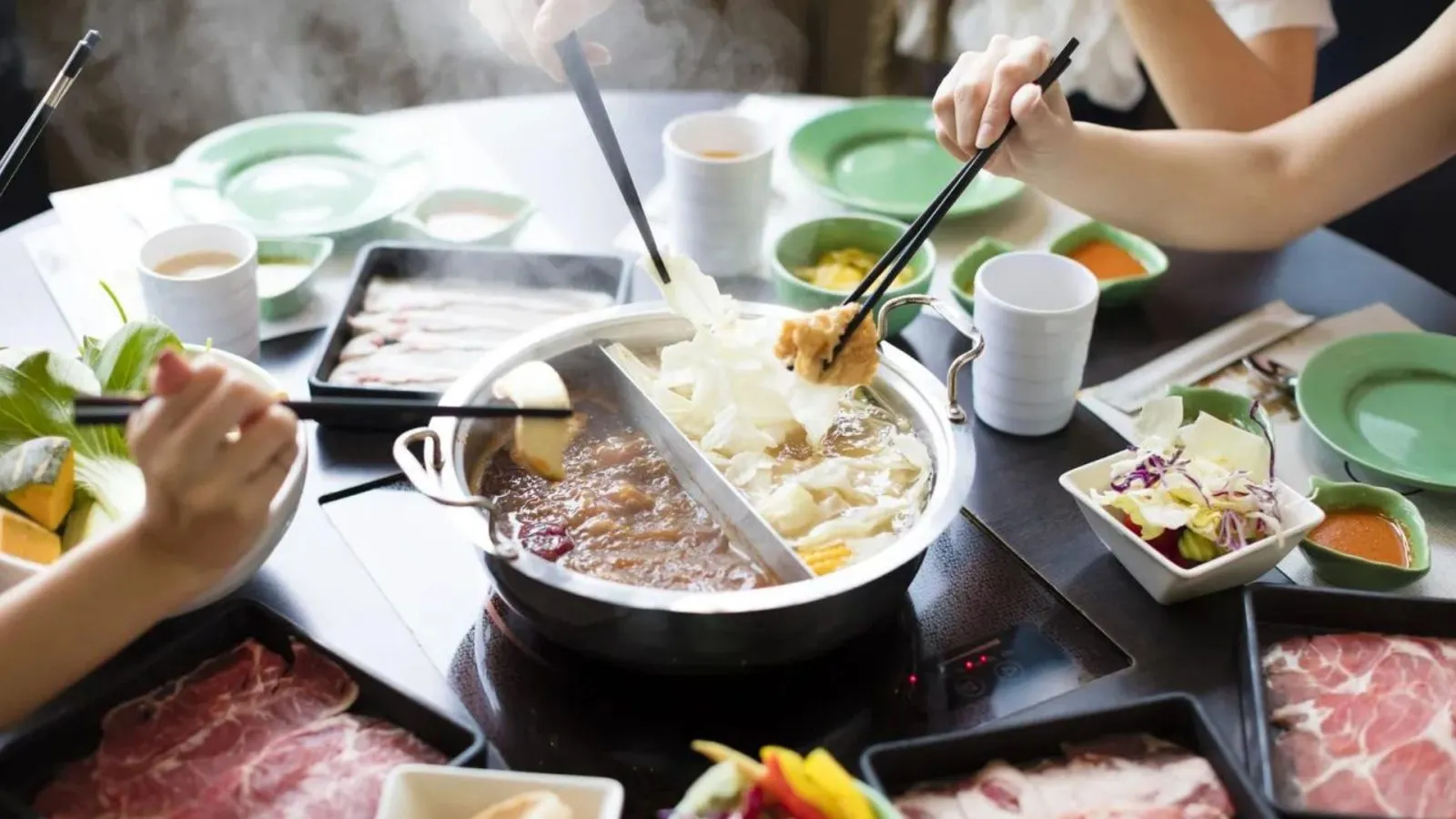

Articles
How Do You Do Hot Pot
Modified: January 6, 2024
Looking for articles on how to do hot pot? Find a variety of informative and practical articles on how to prepare and enjoy hot pot at home.
(Many of the links in this article redirect to a specific reviewed product. Your purchase of these products through affiliate links helps to generate commission for Storables.com, at no extra cost. Learn more)
What is Hot Pot?
Hot Pot, also known as Chinese fondue, is a popular dining experience that originated in China and has become increasingly popular worldwide. It is a communal meal where diners gather around a simmering pot of flavored broth, which is placed in the center of the table. They then cook a variety of fresh ingredients, such as meats, seafood, vegetables, and tofu, in the broth at their own pace.
The concept of hot pot revolves around the idea of shared cooking and eating, making it a social and interactive dining experience. It is a perfect way for friends and family to bond over a delicious meal, as they engage in lively conversations while cooking their favorite ingredients.
The roots of hot pot can be traced back more than a thousand years to the Jin Dynasty in China. It has since evolved and spread throughout Asia, with each region adding its own unique flavors and techniques to the cooking process.
Hot pot has gained popularity due to its versatility and customizable nature. Diners can choose from a wide range of broths, such as spicy Sichuan broth, mild chicken broth, or even vegetarian options. The choice of ingredients is also extensive, allowing each diner to create a personalized meal.
The cooking process is simple and straightforward. Once the broth is simmering, diners place their chosen ingredients into the pot and let them cook for a few minutes until they are cooked to their desired level. This cooking method ensures that the ingredients retain their freshness and flavors, resulting in a delicious and nutritious meal.
Hot pot is not only a satisfying culinary experience, but it also offers several health benefits. The broth used in hot pot is often packed with herbs and spices, which can have therapeutic effects on the body. Additionally, the cooking method is generally considered to be healthier than other cooking techniques, as it requires little to no oil.
Whether you are a fan of spicy and bold flavors or prefer milder and lighter options, hot pot has something for everyone. It is a versatile and inclusive dining experience that caters to a wide range of tastes and dietary preferences.
So the next time you are looking for a unique and interactive dining experience, gather your loved ones and indulge in the flavorful delights of hot pot. It is a memorable and delicious way to create lasting memories around the dinner table.
Key Takeaways:
- Hot pot offers a customizable, communal dining experience with diverse flavors and health benefits, making it a perfect way to bond over delicious, nutritious meals with friends and family.
- From its ancient Chinese origins to its global popularity, hot pot brings people together for interactive cooking, flavorful feasting, and lasting memories, making it more than just a meal.
Read more: How Do You Make Hot Pot
History of Hot Pot
The history of hot pot can be traced back over a thousand years to ancient China. Its origins are believed to lie in the Jin Dynasty, which ruled from the 12th to the 13th century. However, variations of the hot pot concept can be found in other Asian cultures as well.
During the Jin Dynasty, hot pot was initially used as a way to cook and preserve food. The method involved simmering various ingredients in a pot filled with hot water or broth. This allowed the food to be cooked thoroughly and remained warm for a longer period, making it ideal for travelers and soldiers. It was a practical and efficient way to feed a large group of people.
Over time, hot pot evolved from being a purely practical cooking method to a popular communal dining experience. It became closely associated with social gatherings and celebrations. People began to gather around the pot, sharing stories and laughter while enjoying the delicious meal.
During the Mongol-led Yuan Dynasty in the 13th century, the hot pot culture gained wider recognition and popularity. The Mongolian invaders introduced their own version of hot pot, known as “Mongolian hot pot,” which involved using a large pot placed over an open flame. This style allowed for a more flavorful and intense cooking experience.
In the following centuries, hot pot continued to evolve and diversify across various regions in China. Each region added its own unique flavors, ingredients, and cooking techniques to the dish. For example, in Sichuan province, the hot pot is known for its fiery and spicy flavors, thanks to the liberal use of Sichuan peppercorns and chili peppers. In contrast, Cantonese hot pot tends to focus on using fresh and delicate ingredients.
With the globalization and increased cultural exchange in recent decades, hot pot has gained popularity outside of China. It can now be found in many countries around the world, with each region adding its own twist to the dish. In Japan, it is known as “shabu-shabu,” while in Korea, it is called “jeongol.”
Today, hot pot remains a beloved culinary tradition that brings people together. It represents more than just a meal; it is a symbol of warmth, community, and shared experiences. Whether enjoyed at home or in restaurants, hot pot continues to captivate taste buds and create lasting memories.
Types of Hot Pot
Hot pot is a versatile culinary experience that offers a wide range of flavors and ingredients to suit different tastes. Throughout China and other Asian countries, various types of hot pot have emerged, each with its own unique characteristics and regional specialties.
1. Sichuan Hot Pot: Sichuan hot pot is known for its bold and spicy flavors. It features a fiery broth infused with Sichuan peppercorns, chili peppers, and a blend of aromatic spices. This type of hot pot offers a numbing and tingling sensation, commonly referred to as “Mala.” Sichuan hot pot is often accompanied by a variety of meat, such as beef and lamb, as well as fresh vegetables and tofu.
2. Cantonese Hot Pot: Cantonese hot pot, also known as “steamboat,” focuses on simplicity and freshness. The broth is typically clear and light, allowing the natural flavors of the ingredients to shine. Popular ingredients include seafood, such as fish balls, shrimp, and scallops, as well as leafy greens, mushrooms, and dumplings.
3. Mongolian Hot Pot: Mongolian hot pot is characterized by its hearty and robust flavors. Traditionally, it involves using a metal pot placed over an open flame. The broth is often rich and savory, and the ingredients typically include thinly sliced lamb, beef, and a variety of vegetables.
4. Shabu-Shabu: Shabu-shabu is a Japanese version of hot pot that focuses on thinly sliced meat, usually beef or pork. The term “shabu-shabu” refers to the sound made when the ingredients are swished back and forth in the hot broth. The broth is typically light and flavorful, and the meal is accompanied by a dipping sauce made from sesame, soy sauce, and citrus.
5. Thai Hot Pot: Thai hot pot, also known as “suki,” combines the elements of Thai cuisine with the hot pot concept. The broth is often infused with Thai aromatics, such as lemongrass, galangal, and kaffir lime leaves. Popular ingredients include seafood, thinly sliced meat, and a variety of vegetables. The meal is typically accompanied by a spicy and tangy dipping sauce.
These are just a few examples of the types of hot pot available. Each type offers a unique flavor profile and set of ingredients, allowing diners to customize their hot pot experience to their preferences. Whether you prefer spicy, mild, hearty, or light, there is a hot pot variation to suit every palate.
Ingredients for Hot Pot
Hot pot is a versatile and customizable dining experience that allows you to choose from a wide variety of ingredients. Whether you prefer meat, seafood, vegetables, or tofu, there are endless options to create a delicious and satisfying hot pot meal. Here are some common ingredients to consider for your hot pot feast:
1. Meat: Hot pot offers a range of meat options, including thinly sliced beef, pork, lamb, and chicken. These meats cook quickly in the simmering broth and absorb the flavors of the broth and other ingredients.
2. Seafood: From shrimp and scallops to fish balls and squid, seafood adds a delightful and flavorful touch to the hot pot experience. The seafood can be either fresh or frozen, depending on availability and personal preference.
3. Vegetables: A variety of vegetables can be included in hot pot to add color, texture, and nutritional value. Leafy greens such as spinach and bok choy, crunchy vegetables like mushrooms, carrots, and radishes, and root vegetables such as potatoes and taro are popular choices.
4. Tofu and Soy Products: Tofu is a staple ingredient in hot pot, offering a plant-based protein option. It comes in different textures, such as soft, medium, or firm tofu, and can be sliced or cubed. Additionally, soy products like bean curd skin, tofu skin, and soybean sprouts can be added for variety.
5. Noodles and Dumplings: To make the meal more filling, consider adding noodles, such as udon or wheat noodles, into the hot pot. Dumplings, both meat and vegetarian options, are also a popular addition, adding another element of deliciousness to the meal.
6. Broth Enhancers: To elevate the flavor of the broth, you can add various herbs, spices, and seasonings. Common additions include star anise, Sichuan peppercorns, dried chilies, garlic, ginger, and scallions. These ingredients infuse the broth with a rich and aromatic taste.
7. Dipping Sauces: Along with your hot pot meal, you can prepare a selection of dipping sauces to enhance the flavors of the cooked ingredients. Common dipping sauces include sesame sauce, soy sauce, vinegar, chili oil, and garlic paste.
It’s important to note that the selection of ingredients can vary based on personal preference, dietary restrictions, and regional variations. The beauty of hot pot lies in its flexibility and adaptability, allowing you to create a customized dining experience that suits your taste buds.
So, grab your favorite ingredients, gather your loved ones around the table, and get ready for a hot pot feast filled with delectable flavors and delightful conversations.
Preparing for Hot Pot
Preparing for a hot pot meal involves a few key steps to ensure a smooth and enjoyable dining experience. From setting up the table to organizing the ingredients, here are some tips to help you get ready for your hot pot feast:
1. Choosing a Hot Pot: Determine the type of hot pot you want to use. You can opt for a traditional clay pot, an electric hot pot, or a portable stovetop hot pot. Consider the size and capacity that suits the number of guests you’ll be serving.
2. Selecting a Broth: Decide on the type of broth you want to use. Whether it’s a spicy Sichuan broth, a flavorful seafood broth, or a simple vegetable broth, make sure to have enough broth to accommodate everyone at the table.
3. Setting Up the Table: Arrange the dining area with a hot pot cooker, individual serving bowls, chopsticks, soup ladles, and small plates for dipping sauces. Add condiments like chili oil, garlic paste, and soy sauce for customization.
4. Preparing the Ingredients: Slice the meats, seafood, and vegetables into bite-sized pieces to ensure they cook quickly and evenly. Arrange the ingredients on separate platters or in individual bowls for easy access during the meal.
5. Preparing Dipping Sauces: Prepare a variety of dipping sauces to complement the hot pot flavors. Common dipping sauces include sesame sauce, soy sauce, vinegar, chili oil, and garlic paste. Offer different combinations for guests to choose from.
6. Setting the Table: Lay out the ingredients, sauces, and utensils on the table, ensuring everyone has enough space to cook and reach for their desired ingredients. Place the hot pot in the center of the table and ensure it is within reach of all guests.
7. Filling the Hot Pot: Pour the selected broth into the hot pot, ensuring it covers at least half of the pot. Bring the broth to a simmer or boil, depending on the type of hot pot and broth you are using.
8. Cooking Order: Discuss with your guests the order in which the ingredients should be added to the hot pot. Delicate items such as seafood and leafy greens cook quickly and should be added towards the end, while meats and firmer vegetables can go in earlier.
9. Enjoying the Hot Pot: Once the broth is simmering and the ingredients are prepared, invite your guests to start cooking their desired ingredients in the hot pot. Encourage them to savor the process and enjoy the shared experience of cooking and eating together.
10. Managing the Heat: Adjust the heat of the hot pot throughout the meal to maintain a gentle simmer. Add more broth if needed and replenish ingredients as necessary to keep the hot pot going.
Remember, the key to a successful hot pot gathering is the enjoyment of good food and good company. So relax, have fun, and relish in the delightful flavors and communal spirit that hot pot brings to the table.
Read more: How To Do Hot Pot In Instant Pot
How to Cook Hot Pot
Hot pot is not only a delicious dining experience but also a fun and interactive way to cook and enjoy a meal with family and friends. Here is a step-by-step guide on how to cook hot pot:
1. Prepare the Broth: Choose the type of broth you prefer, whether it’s a spicy Sichuan broth, a mild chicken broth, or a vegetarian option. Pour the broth into the hot pot and bring it to a simmer or boil, depending on your preference.
2. Add Seasonings: Enhance the flavor of the broth by adding herbs, spices, and seasonings. Common additions include ginger, garlic, star anise, dried chili flakes, Sichuan peppercorns, and soy sauce. Adjust the seasonings to your desired taste.
3. Select Your Ingredients: Place a variety of ingredients on the table, such as thinly sliced meats, seafood, vegetables, tofu, and noodles. Each person can then choose their preferred ingredients based on their taste preferences.
4. Cook the Ingredients: Once the broth is simmering, start adding the ingredients to the hot pot. Depending on the cooking time required for each ingredient, you may begin with meats and vegetables that take longer to cook, while seafood and delicate vegetables can be added towards the end.
5. Cook at Your Own Pace: Each person can cook their ingredients at their desired pace by gently placing them into the simmering broth. The ingredients will cook quickly, usually within a few minutes. Use chopsticks or a slotted spoon to remove the cooked ingredients from the hot pot.
6. Customize Your Dipping Sauce: While waiting for your ingredients to cook, prepare a dipping sauce by combining soy sauce, sesame oil, vinegar, chili oil, and other condiments according to your preference. Dip your cooked ingredients into the sauce before eating to add extra flavor.
7. Enjoy and Repeat: As the meal progresses, continue to add more ingredients to the hot pot and enjoy the flavorful broth that develops from the combination of the cooked ingredients. Experiment with different ingredient combinations and flavor profiles.
8. Manage the Heat: Adjust the heat of the hot pot using the temperature control on an electric hot pot or by adding more broth to control the intensity of the simmer. Add more seasonings or ingredients as needed to maintain the desired flavors throughout the meal.
9. Share and Connect: The beauty of hot pot lies in the communal dining experience. Share stories and laughter with your loved ones as you cook and enjoy the meal together. The interactive nature of hot pot fosters connection and creates lasting memories.
10. Save Room for Dessert: Once you have savored the savory delights of hot pot, consider ending the meal with a light and refreshing dessert such as fresh fruit, sweet dumplings, or a sweet soup.
Hot pot offers a unique and interactive way of dining that brings people together. It allows everyone to be part of the cooking process while enjoying a shared experience filled with delicious flavors and connection. So gather your loved ones, gather around the hot pot, and embark on a culinary adventure.
Prepare a variety of fresh ingredients such as thinly sliced meat, leafy vegetables, and mushrooms for your hot pot. This will ensure a delicious and satisfying meal.
Dipping Sauces for Hot Pot
One of the joys of hot pot dining is the opportunity to personalize your meal with a variety of dipping sauces. These sauces add flavor, enhance the taste of cooked ingredients, and provide a delightful dipping experience. Here are some popular dipping sauces that you can create and enjoy with your hot pot:
1. Sesame Sauce: Sesame sauce is a classic dipping sauce for hot pot. It is made by combining toasted sesame paste, soy sauce, rice vinegar, sugar, minced garlic, and a touch of chili oil. This savory and nutty sauce complements a wide array of ingredients, such as meats, vegetables, and tofu.
2. Spicy Chili Oil: For those who enjoy a fiery kick, spicy chili oil is a must. This sauce consists of hot chili oil, garlic, soy sauce, and sometimes Sichuan peppercorns for an extra tingling sensation. It adds heat and depth of flavor to the hot pot, especially when combined with meat, seafood, or vegetables.
3. Soy-Sesame Sauce: A simple yet delicious dipping sauce is a combination of soy sauce, sesame oil, minced garlic, and a hint of sugar. This sauce is well-suited for delicate ingredients like leafy greens, tofu, and seafood, as it enhances their natural flavors without overpowering them.
4. Ponzu Sauce: Ponzu sauce is a citrus-based sauce that adds a tangy and refreshing element to hot pot. It is made by mixing soy sauce, citrus juice (such as lemon or lime), rice vinegar, and a touch of sweetness. Ponzu sauce pairs well with seafood and thinly sliced meats.
5. Peanut Sauce: Peanut sauce offers a creamy and nutty flavor profile that complements a range of ingredients. It is commonly made by combining peanut butter, soy sauce, sesame oil, garlic, and a hint of sweetness. This sauce adds richness when paired with meats, tofu, or vegetables.
6. Vinegar Sauce: A simple but effective dipping sauce is vinegar sauce. It is made by mixing black rice vinegar, soy sauce, minced garlic, and a pinch of sugar. The tangy and slightly sour flavor complements hot pot ingredients such as dumplings, seafood, and meats.
7. Cilantro-Ginger Sauce: Cilantro-ginger sauce brings a fresh and vibrant element to your hot pot experience. Create this sauce by blending fresh cilantro, minced ginger, soy sauce, sesame oil, and a touch of sugar. It complements a wide range of ingredients, adding a burst of freshness and aroma.
Feel free to experiment with these sauces and adjust the ingredients to suit your personal taste preferences. You can also create your own unique combinations by mixing and matching different flavors and ingredients.
Remember, the dipping sauces add an extra layer of flavor to your hot pot meal, allowing you to customize and enhance the taste of each bite. So, get creative, enjoy the dipping experience, and savor the delicious flavors of your hot pot feast.
Etiquette and Tips for Hot Pot
Hot pot dining is not only about the delicious food but also about the communal experience and the respect for traditions. Here are some etiquette tips to enhance your hot pot experience and ensure a pleasant and enjoyable meal:
1. Wait for the Hot Pot to Heat Up: Patience is key when it comes to hot pot. Wait for the broth to come to a simmer or boil before adding ingredients. This ensures that the food cooks evenly and maintains its quality throughout the meal.
2. Be Mindful of Hygiene: Hot pot is a communal dining experience, so it is important to maintain good hygiene. Use clean utensils or chopsticks when selecting ingredients from the shared plate and avoid cross-contamination between raw and cooked foods.
3. Cook Small Portions: Hot pot is all about cooking ingredients at your own pace. Avoid overloading the hot pot with too many ingredients at once, as this can result in overcrowding and uneven cooking. Cook small batches, allowing everyone to enjoy freshly cooked and flavorful bites.
4. Use Utensils Thoughtfully: Use long chopsticks or a slotted spoon to add and remove ingredients from the hot pot, ensuring that any residue or excess liquid is drained back into the pot. Avoid careless splashing or transferring hot broth, as it can cause accidents or burns.
5. Be Considerate of Cooking Times: Different ingredients require different cooking times. Consider the cooking time of each ingredient before adding it to the hot pot to ensure that everything is cooked to perfection. Delicate items like seafood and leafy greens cook quickly, while denser meats and root vegetables may require a bit more time.
6. Share and Rotate Ingredients: Hot pot is a communal experience meant to be shared. As ingredients are cooked, share them with others at the table. Rotate and try different ingredients to explore and enjoy the variety of flavors offered by the hot pot.
7. Enjoy the Broth: The flavorful broth in the hot pot is an integral part of the experience. Take sips of the broth between bites to enjoy the delicious essence that develops as ingredients are cooked. You can also ladle some broth into your personal bowl to savor separately.
8. Mind Your Dipping Sauce: When dipping your cooked ingredients into the sauce, avoid double-dipping to maintain hygiene and ensure that everyone gets to enjoy the full flavors of the sauce. Scoop the desired amount of sauce onto your plate or individual dipping dish to avoid contaminating the communal dip.
9. Be Respectful of Others’ Preferences: Hot pot is a customizable dining experience where everyone can choose their ingredients and adjust the flavors to their liking. Respect others’ preferences and dietary restrictions, and be open to trying different combinations and flavors.
10. Enjoy the Experience: The most important aspect of hot pot dining is to enjoy the experience, connect with your family and friends, and savor the flavors. Engage in conversations, appreciate the communal spirit, and have fun while cooking and indulging in this delightful meal.
By following these etiquette tips, you can ensure a harmonious and enjoyable hot pot experience, creating lasting memories and fostering a sense of togetherness around the dining table.
Popular Hot Pot Variations
Hot pot is a versatile dining experience that has evolved and adapted across different regions and cultures. Here are some popular hot pot variations that showcase unique flavors and culinary traditions:
1. Chinese Hot Pot: Chinese hot pot is the originator of this beloved dining phenomenon. It encompasses a wide range of regional variations, including Sichuan hot pot, Cantonese hot pot, and Mongolian hot pot. Each style has its own distinct broth flavors, ingredient selection, and cooking techniques.
2. Japanese Shabu-Shabu: Shabu-shabu is a Japanese style of hot pot that features thinly sliced meat cooked in a konbu (kelp) or bonito-flavored broth. The term “shabu-shabu” refers to the sound made when meat is swished back and forth in the hot broth. It is often enjoyed with a dipping sauce made from soy sauce, citrus, and sesame.
3. Thai Sukiyaki: Sukiyaki is a Thai variation of hot pot that combines the flavors of Thai cuisine with the hot pot concept. The broth is typically flavored with Thai aromatics like lemongrass, galangal, and lime leaves. Sukiyaki is often enjoyed with a variety of thinly sliced meats, vegetables, tofu, and glass noodles.
4. Korean Jeongol: Jeongol is a Korean hot pot that features a variety of ingredients cooked in a savory broth. It typically includes a combination of meats, seafood, vegetables, and noodles. Jeongol is known for its rich and hearty flavors, often utilizing Korean chili paste, soybean paste, and other seasonings.
5. Swiss Fondue: While not traditionally considered a hot pot, Swiss fondue shares some similarities with the hot pot dining experience. It involves dipping bread cubes into a pot of melted cheese, typically made with a combination of Swiss cheeses like Gruyere and Emmental. Fondue is a communal dining experience that brings people together around a shared pot of cheesy goodness.
6. Vietnamese Lẩu: Lẩu is a Vietnamese version of hot pot, known for its fragrant broths and fresh ingredients. It often features a variety of herbs, spices, and aromatics like lemongrass, ginger, and garlic. Vietnamese hot pots typically incorporate a combination of meat, seafood, vegetables, and noodles.
7. Mongolian Boortsog: Boortsog is a Mongolian hot pot that highlights the nomadic tradition of cooking meat and vegetables in a communal pot. It typically involves simmering meat, such as lamb or beef, along with root vegetables in a flavorful broth. The resulting broth is then enjoyed as a soup, while the tender meats and vegetables are served alongside.
These are just a few examples of the diverse and culturally rich hot pot variations found around the world. Each variation brings its own unique flavors, ingredients, and techniques to the hot pot dining experience, providing a delightful exploration of tastes and traditions.
Read more: How To Do A Hot Pot Electric Skillet
Health Benefits of Hot Pot
Hot pot is not only a delicious and sociable dining experience, but it also offers several health benefits. Here are some of the ways that hot pot can contribute to your overall well-being:
1. Nutrient-rich Ingredients: Hot pot allows you to incorporate a variety of fresh ingredients into your meal, including lean proteins like meat and seafood, as well as an abundance of vegetables. This means you can create a well-balanced and nutrient-rich meal that provides essential vitamins, minerals, and antioxidants to support overall health.
2. Low in Fat: Hot pot can be a healthy option, as it typically involves cooking food in a simmering broth rather than frying or using excessive amounts of oil. By using minimal oil, you can enjoy a flavorful meal that is low in fat and calories.
3. Control Over Portion Sizes: With hot pot, you have control over the portions and can choose how much you want to eat. This can be particularly beneficial for those who are conscious of their calorie intake or are trying to maintain a healthy weight.
4. Customizable Broths: The broth used in hot pot can be tailored to suit individual preferences and dietary needs. You can opt for a light and clear broth or a flavorful and spicy one, depending on your taste. This customization allows you to avoid excessive sodium or other unhealthy additives commonly found in pre-packaged broths.
5. Phytonutrients from Herbs and Spices: Hot pots often incorporate a variety of herbs, spices, and aromatics in the broth. These additions not only enhance the flavor but also provide health benefits. Many herbs and spices, such as ginger, garlic, and chili peppers, are known for their anti-inflammatory, digestion-promoting, and immune-boosting properties.
6. Shared Dining Experience: The communal nature of hot pot encourages conversation, laughter, and connection among diners. This positive social interaction has been shown to contribute to overall well-being, supporting mental and emotional health.
7. Hydration: The simmering broth in hot pot helps keep you hydrated as you consume the nutrient-rich ingredients. Additionally, you can add water or additional broths to the hot pot as needed, allowing you to customize the amount of liquid you consume during the meal.
It’s important to note that the health benefits of hot pot can be maximized by making mindful ingredient choices, including a variety of vegetables, lean protein sources, and using lean broths. Also, be mindful of portion sizes and avoid excessive consumption of high-sodium dipping sauces or fried items.
Overall, hot pot offers a healthy and enjoyable dining experience that combines the benefits of fresh ingredients, customization, and a shared communal meal. So gather your family and friends, savor the flavors, and reap the health benefits while indulging in this delightful culinary tradition.
Hot Pot Restaurants around the World
Hot pot has gained popularity around the world, with hot pot restaurants popping up in various countries and cities. Whether you’re a hot pot enthusiast or a curious food lover, here are some renowned hot pot restaurants that offer a taste of this delicious dining experience:
1. Haidilao (China): Haidilao is one of the most recognizable hot pot restaurant chains in China, known for its exceptional service and extensive menu options. They offer a wide range of broths, ingredients, and dipping sauces to cater to every palate.
2. Little Sheep Mongolian Hot Pot (International): Originating from Inner Mongolia, Little Sheep Mongolian Hot Pot has expanded to become a global chain with locations across Asia, North America, and beyond. They are renowned for their flavorful broths and high-quality ingredients.
3. Mala Project (United States): Located in New York City, Mala Project offers authentic Sichuan-style hot pot, known for its tongue-numbing and spicy flavors. They feature a variety of broths and a wide selection of ingredients, including innovative vegetarian options.
4. Shaburi & Kintan Buffet (Japan): Shaburi & Kintan Buffet is a popular hot pot restaurant chain in Japan, offering a unique all-you-can-eat hot pot and grill buffet experience. They provide a range of premium ingredients and a variety of broths to satisfy cravings.
5. Xian Street Food Hot Pot (Australia): Located in Melbourne and Sydney, Xian Street Food Hot Pot brings the flavors of Northwestern China to Australia. They specialize in hand-pulled noodles, traditional broths, and an array of authentic ingredients to create an unforgettable dining experience.
6. Boiling Point (United States, Canada): Boiling Point is a hot pot restaurant chain with locations spread across the United States and Canada. They offer individual hot pots with customizable broths and an extensive selection of meats, seafood, vegetables, and specialty items like stinky tofu.
7. Steamov (Hong Kong): Steamov in Hong Kong is known for its modern and upscale hot pot dining experience. They offer a variety of creative broths, including lobster bisque and truffle mushroom, along with premium ingredients and a trendy ambiance.
8. Dadong Hot Pot (China): Dadong Hot Pot, with multiple locations in China, combines traditional hot pot with an elegant dining atmosphere. They focus on high-quality ingredients and offer a wide range of innovative broths, including medicinal herb-infused options.
9. Shu Guo Yin Xiang (Taiwan): Shu Guo Yin Xiang, located in Taiwan, is renowned for its flavorful and rich hot pot broths. They source their ingredients from local farms, ensuring freshness and quality for a truly memorable hot pot experience.
10. HaiDiLao Hot Pot (International): With locations in various countries, including China, the United States, and Singapore, HaiDiLao is a global hot pot chain known for its top-notch service, quality ingredients, and extensive menu options. They offer a range of traditional and innovative broths to satisfy every palate.
These are just a few examples of the many hot pot restaurants around the world that cater to hot pot enthusiasts and those looking to explore this unique dining experience. Whether you’re craving traditional flavors or innovative twists, there is a hot pot restaurant waiting to take you on a flavorful journey.
Conclusion
Hot pot is more than just a meal; it is a social and interactive dining experience that brings people together over a simmering pot of flavorful broth. From its rich history rooted in ancient China to its widespread popularity around the world today, hot pot continues to captivate taste buds and create lasting memories.
With its versatility and customizability, hot pot offers a wide range of options to suit various tastes and dietary preferences. From spicy Sichuan hot pots to mild Cantonese broths, there is a flavor profile to satisfy every craving. The selection of ingredients is vast, allowing for a personalized and nutritious meal incorporating meats, seafood, vegetables, tofu, and more.
As you gather around the hot pot with friends and family, you engage in the shared experience of cooking and eating together. The interactive nature of hot pot cultivates conversations, laughter, and connection, strengthening relationships and creating a sense of togetherness.
Not only does hot pot provide a delightful dining experience, but it also offers several health benefits. With its emphasis on fresh ingredients, minimal use of oil, and customizable broths, hot pot allows for a balanced and nutritious meal. The variety of flavors and aromatics used in hot pot broths also contribute to overall well-being.
Whether you’re enjoying hot pot in a traditional Chinese restaurant, exploring international variations, or hosting a hot pot gathering at home, the beauty of this culinary tradition lies in its adaptability and inclusiveness. Hot pot welcomes everyone to savor the flavors, share stories, and create lasting memories.
So, the next time you’re looking for a unique and enjoyable dining experience, consider diving into the world of hot pot. Explore the different broth flavors, experiment with ingredients, and embrace the communal spirit that hot pot brings to the table. Indulge in the deliciousness, cherish the connections, and relish the warm and delightful journey of hot pot.
Frequently Asked Questions about How Do You Do Hot Pot
Was this page helpful?
At Storables.com, we guarantee accurate and reliable information. Our content, validated by Expert Board Contributors, is crafted following stringent Editorial Policies. We're committed to providing you with well-researched, expert-backed insights for all your informational needs.

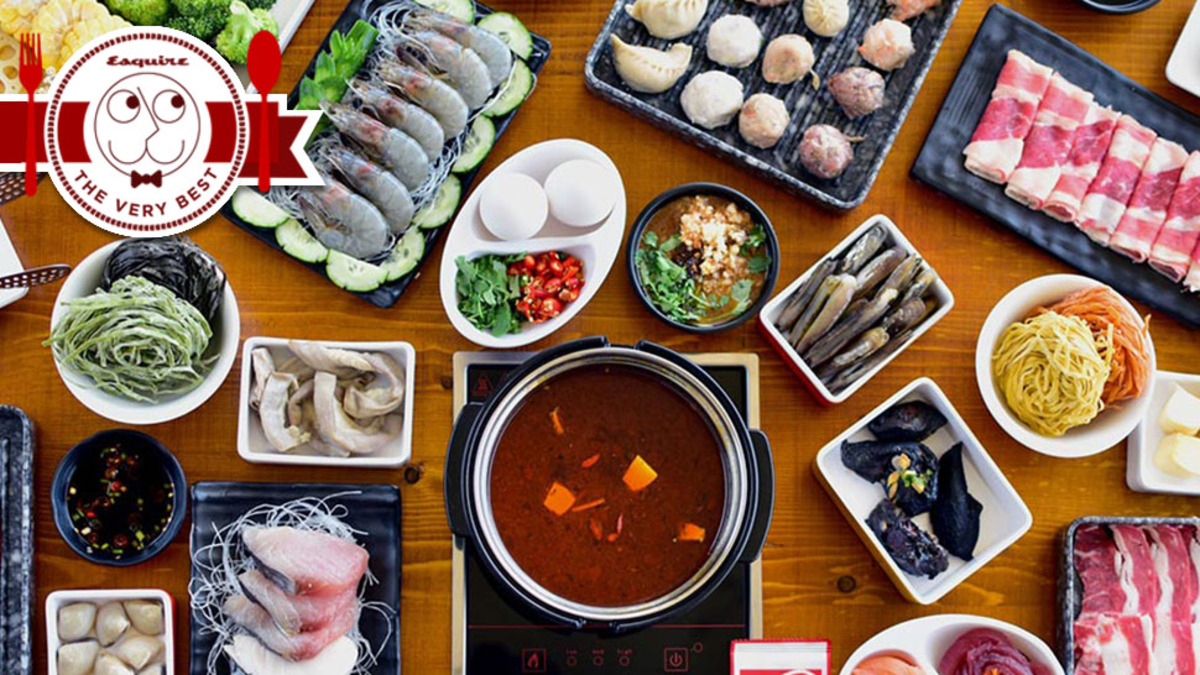
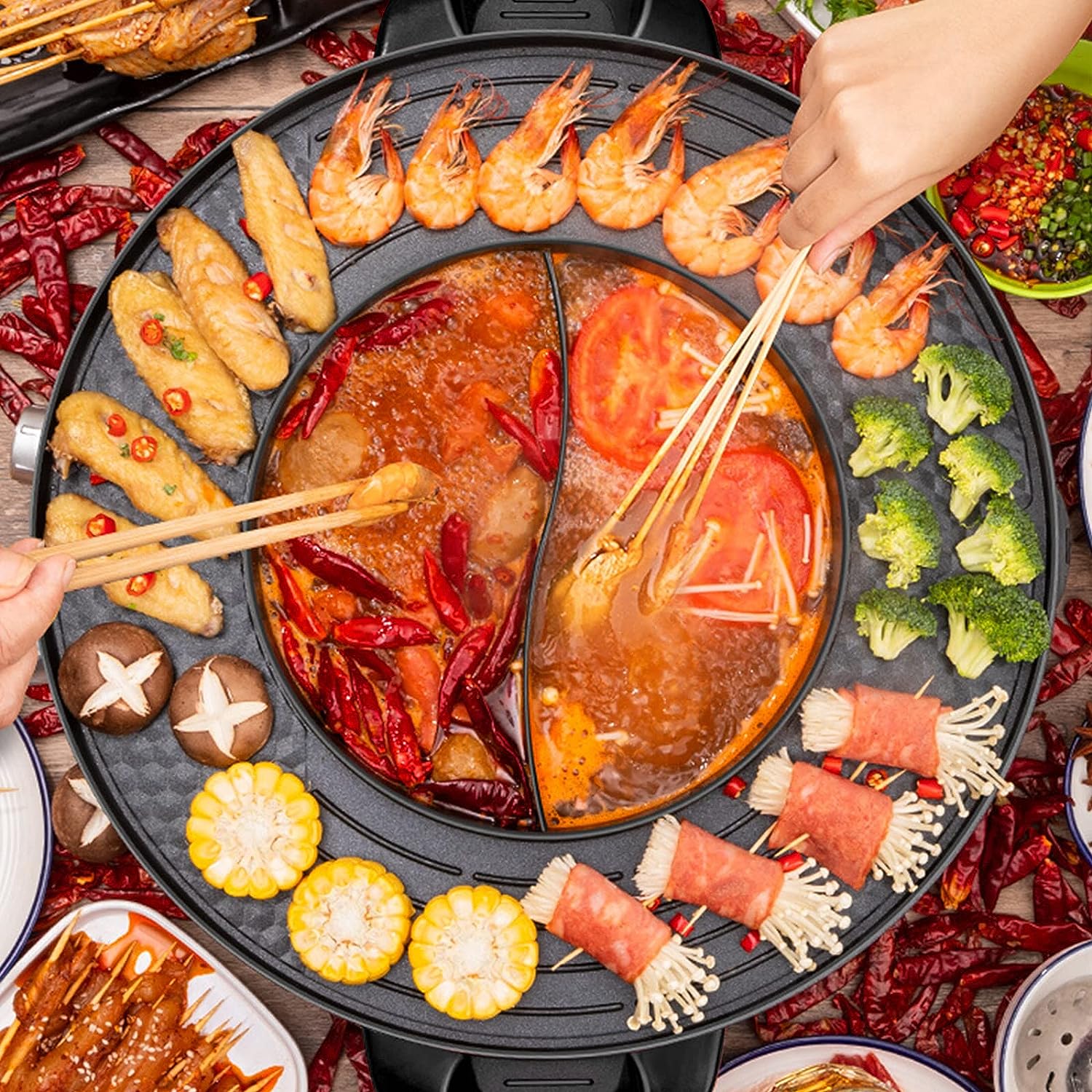
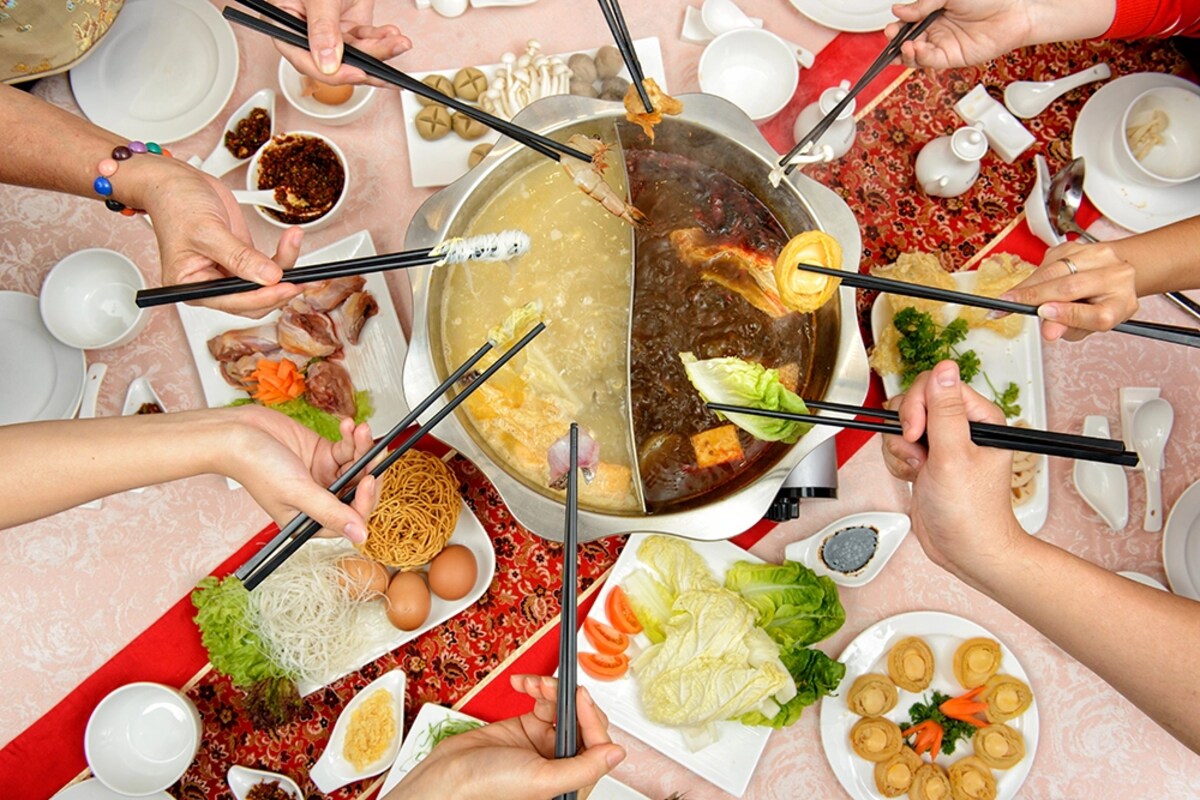

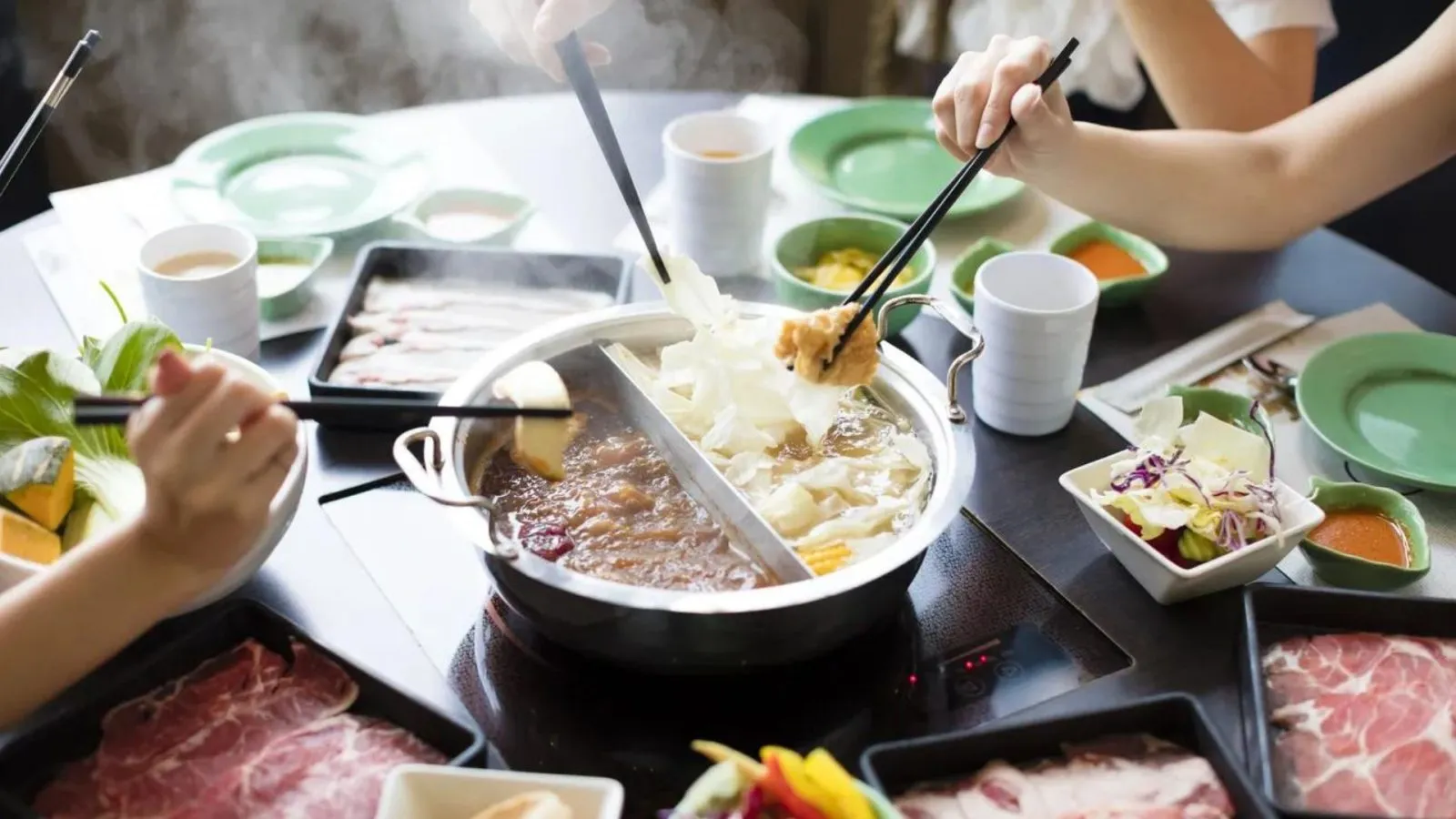
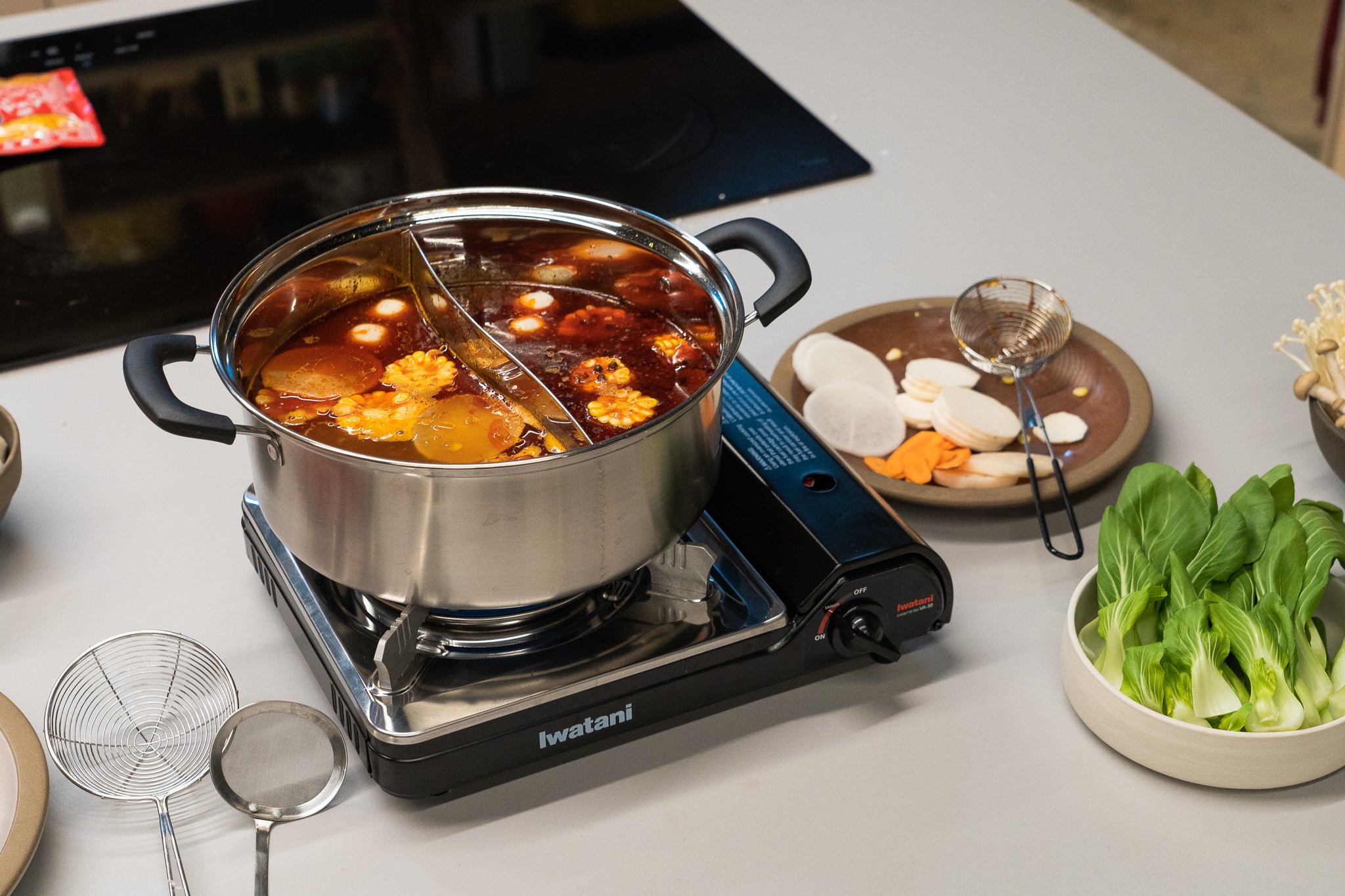
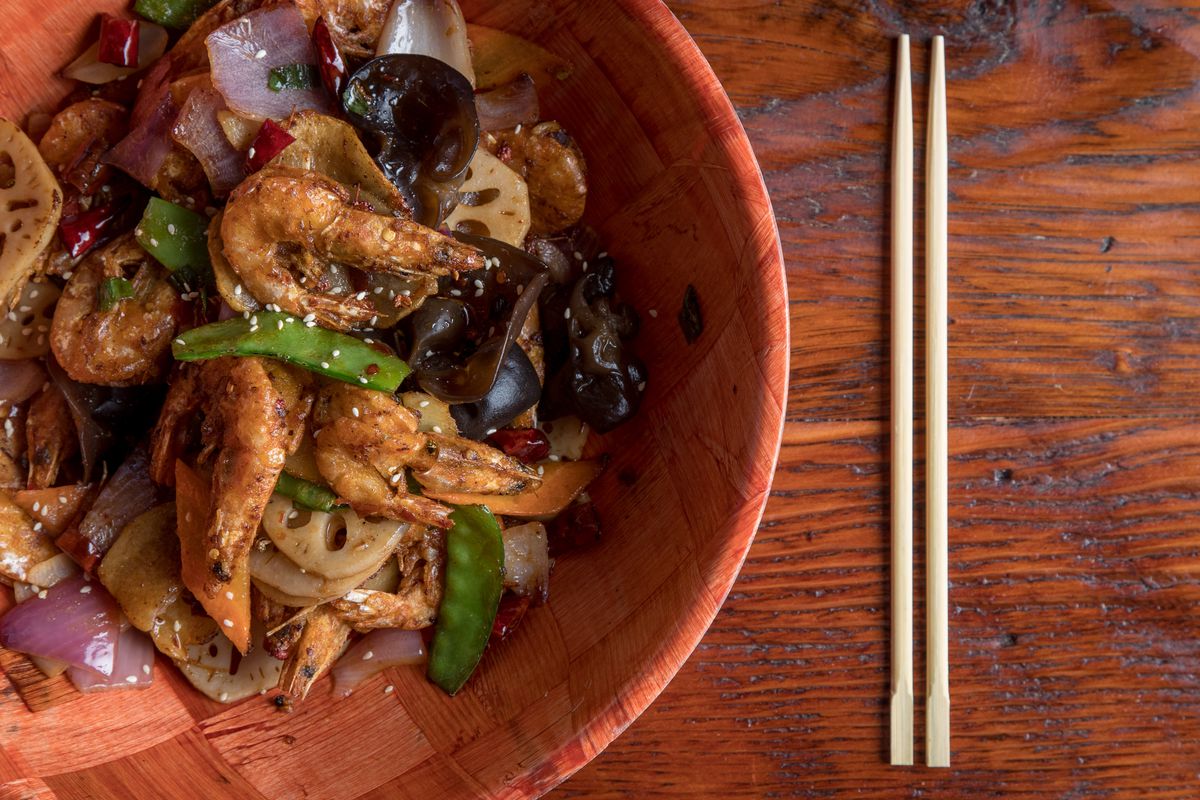
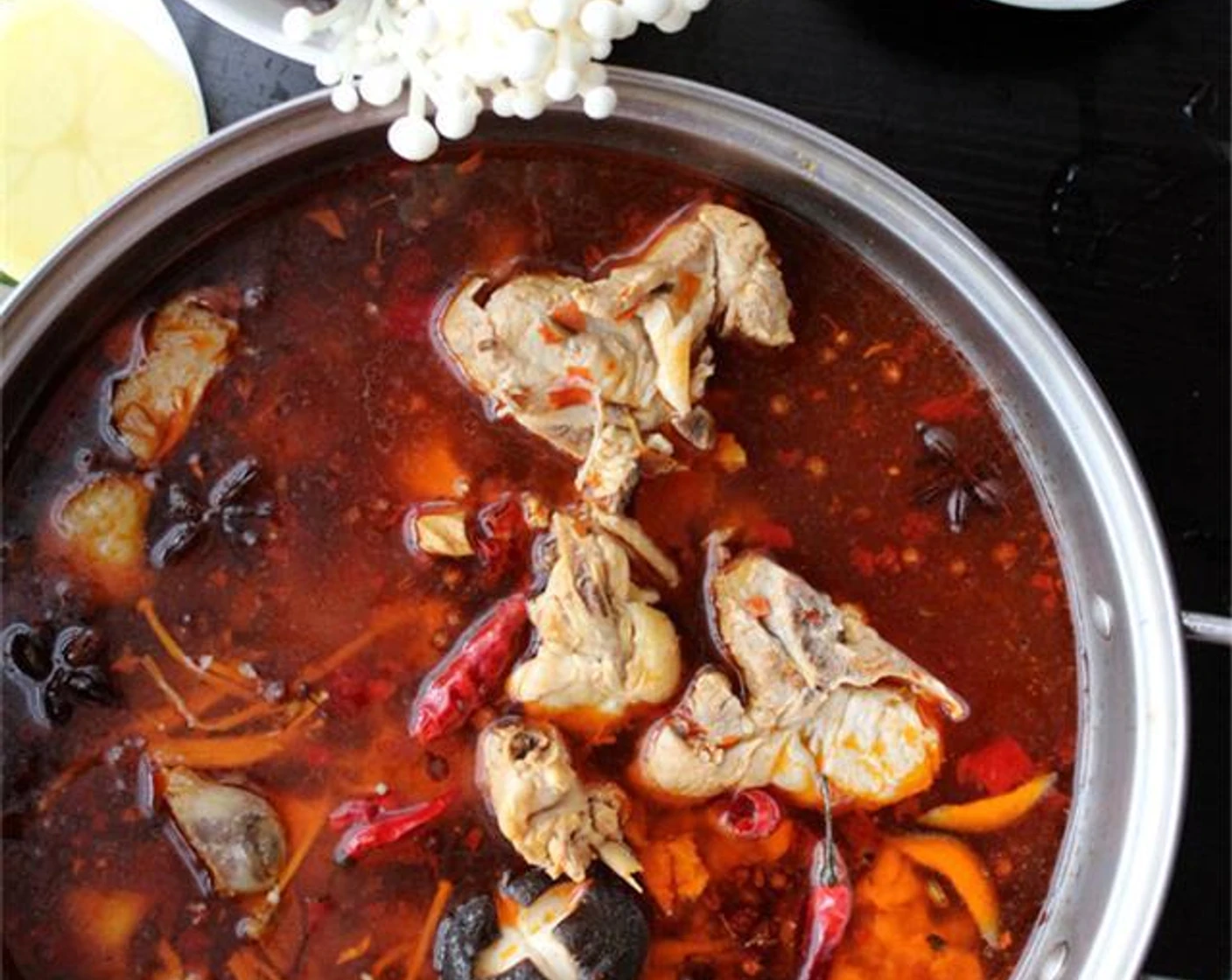
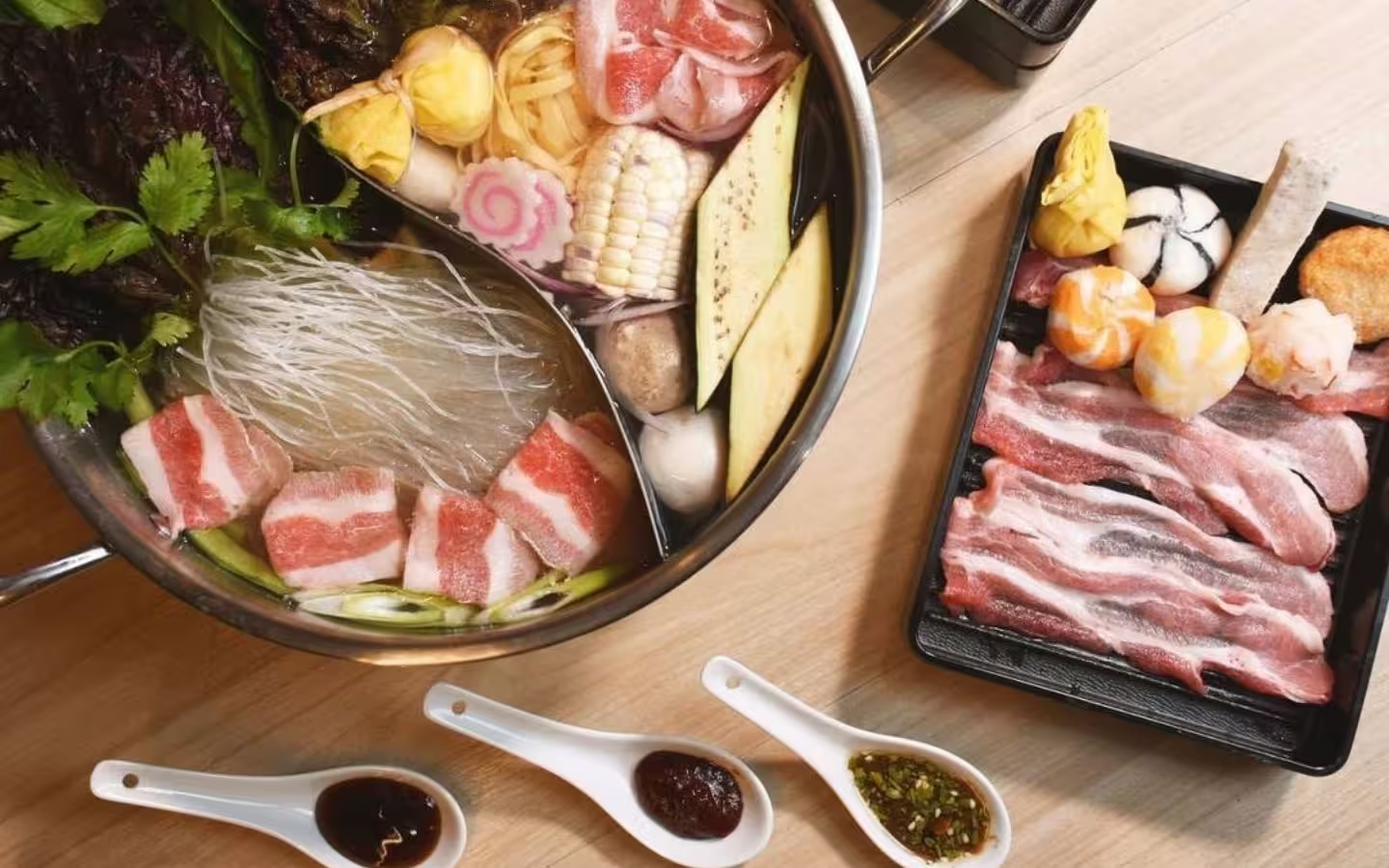
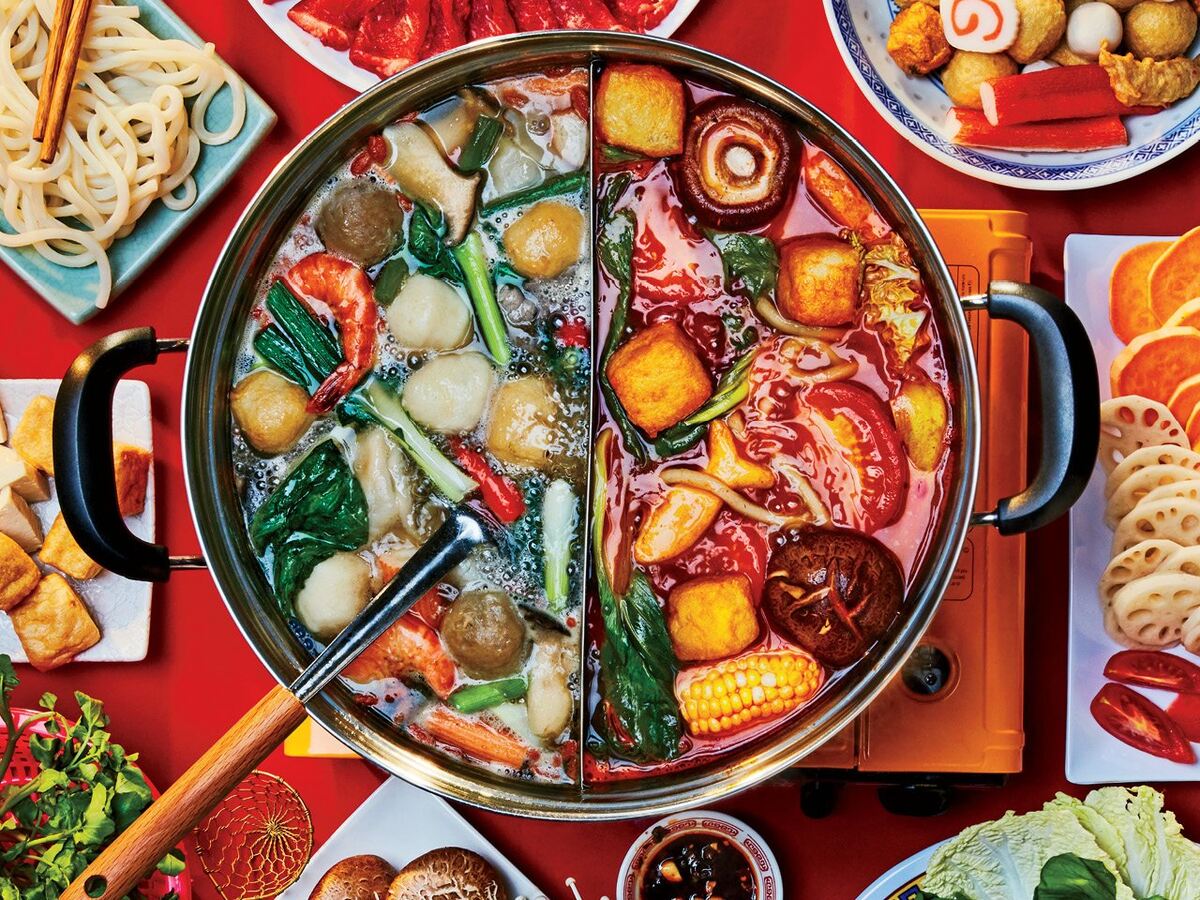
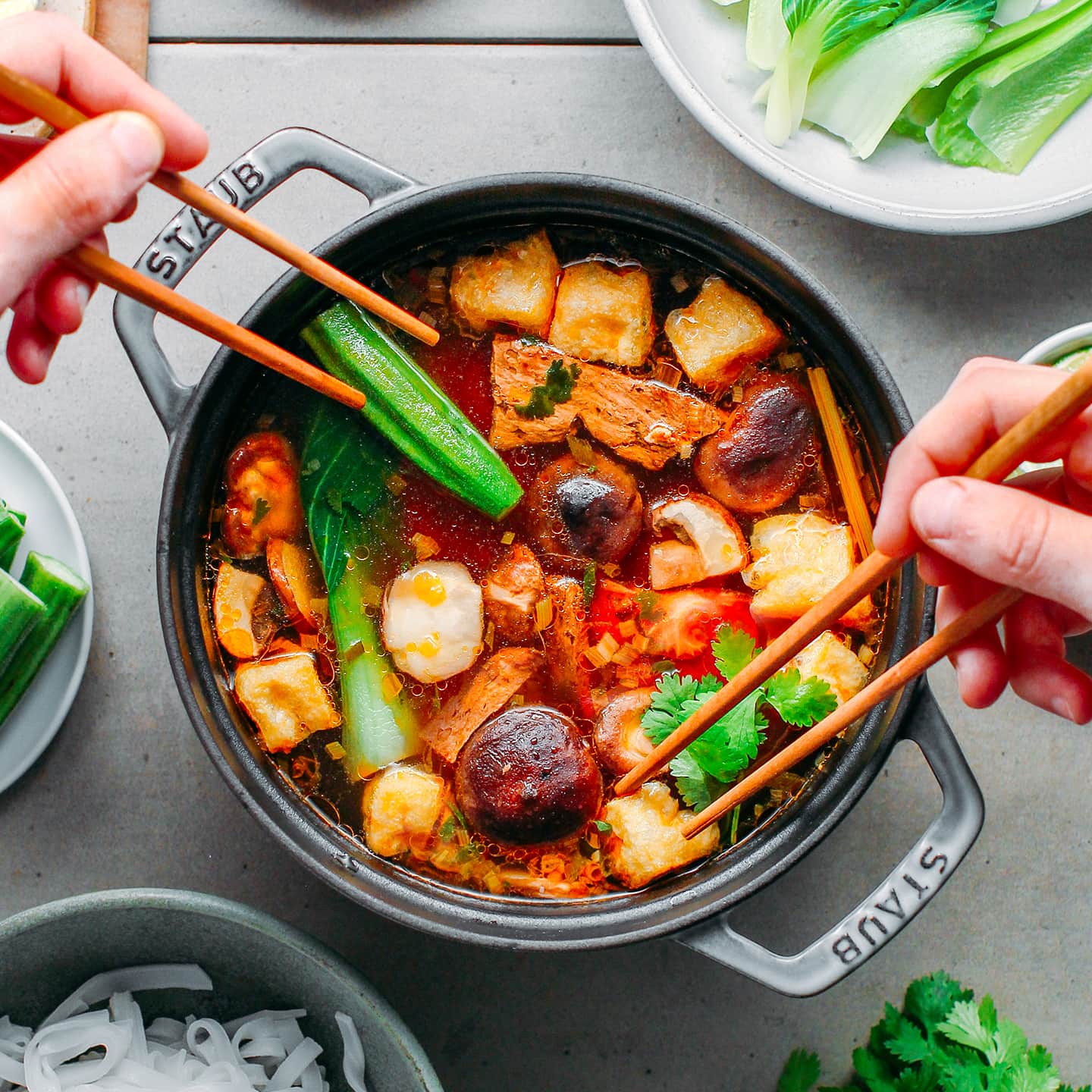
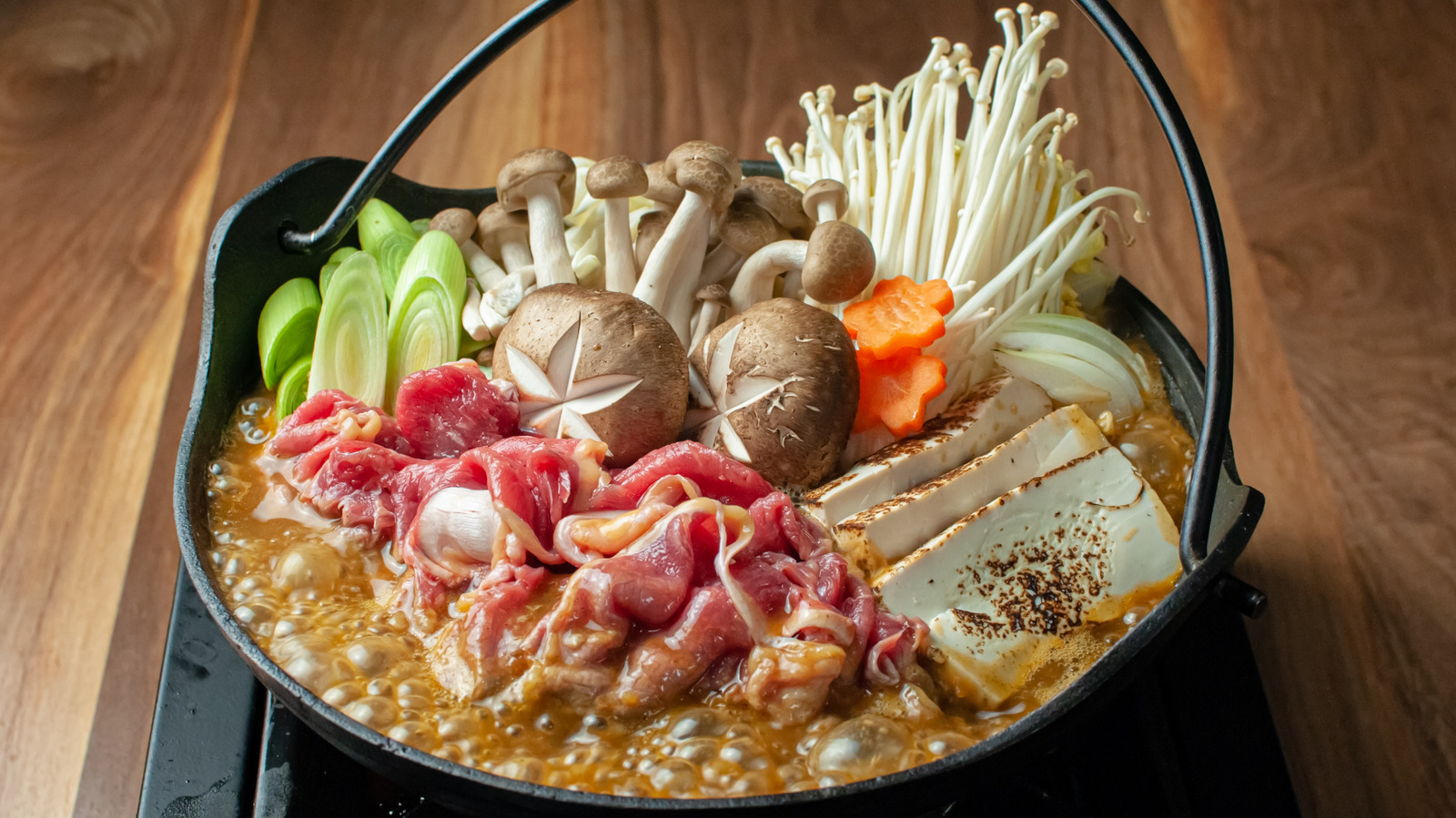

0 thoughts on “How Do You Do Hot Pot”